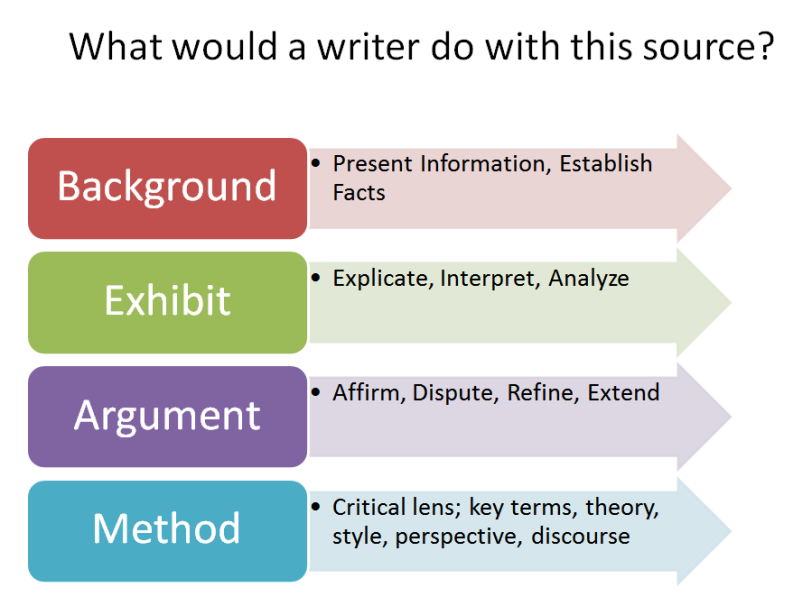For awhile now I’ve been thinking about the best way to flip our freshmen composition library instruction. Two catalysts have stirred my thinking: the successful development and implementation of our Information Literacy Tutorial and an article (full-text is behind pay wall) from the Chronicle on composition courses not teaching source analysis.
I’ve had the Chronicle article by Dan Berrett on my whiteboard for over a year now with this question written next to it: “How can we help?” We being the library instruction sessions. Library instruction is integrated into our freshman composition courses and we have done a fine job of introducing freshmen to basic information literacy skills (ACRL standards 1 & 2). But Standard 3 has remained elusive.
From one perspective (the half-empty one) you could make the argument that there is not enough time in a one-shot session to teach students how to critically evaluate and incorporate sources into their arguments. True. You could also argue that standard 3 veers into critical thinking territory and is therefore beyond the scope of librarians. [See: Elmborg, J. Critical Information Literacy: Definitions and Challenges. In Transforming Information Literacy Programs: Intersecting Frontiers of Self, Library Culture, and Campus Community. 75-95, 2012.]
But from the glass half-full perspective, I can make the argument that standard 3 can still be taught in a one-shot even though students will not master it in a one-shot. In fact, students may not master it until they graduate. Critical thinking skills continue to be an essential learning outcome to be mastered by college graduates, but one that must to taught in every course. It is not the sole domain of one course. Similarly, critical source analysis also is not the domain of one course, but the freshman composition course is the building block course.
Having embraced the idea that we can help I set out to envision ways that we might alter our curriculum. This is where flipping comes in. If freshman composition students could work through our Information Literacy Tutorial prior to coming to the library research workshop, then we could spend a lot less time teaching standards 1 & 2 and more time teaching standard 3. In fact, this change has recently been embraced in the new standard sequence.
So how then should we move to teaching standard 3? The curriculum I have developed is based upon the source use model authored by Joseph Bizup. Bizup’s model, BEAM, pushes readers to move beyond simple definitions of source types, primary vs. secondary, into dynamic definitions that depend on how the author will use the source.

What could a writer do with this source? by Kristin M. Woodward/Kate L. Ganski is licensed under a Creative Commons Attribution-NonCommercial-ShareAlike 4.0 International License.
Here is the outline for the new curriculum:
I. Source Spectrum Block [See: my previous blog post on this.]
II. BEAM Block [Introduce with slide above and discuss with topic example.]
III. Group Tasks [As a class develop a keyword search strategy for a question. Split into 4 groups – each group tasked with finding a source that could be used as B, E, A, or M on a paper on this topic. Groups share back their findings.]
We’ve had the opportunity to pilot this new approach with a couple of sessions this semester. Feedback from professors has been overwhelmingly supportive (“This is what I’ve dreamed library instruction could be.”) We also observed students talking more, collaborating more, and really wrestling with sources that they were finding. We will do some end of semester assessment to determine impact on student source use. Ideally if we adopt this curriculum, freshman composition professors will also adopt the BEAM model so that it will be reinforced throughout the course.
I really enjoyed teaching this, but I love to try new things and feel well versed in the language of source use. Other librarians might not feel as confident or comfortable talking authoritatively on this topic. That is a challenge that I need to plan for. Training for teaching with this model is only part of that plan. The other part is more tricky as it deals with shifting roles of librarians.

Pingback: Summer Instruction Camp Day 1 | My So Called Librarian Life
Pingback: Good for what? Considering context in building learning objects. | Information Wants To Be Free
Wow, this is so great. I’ve been referring back to these posts repeatedly as I think about how to utilize BEAM in my instruction. I also adapted the BEAM slide of yours above for a handout (and of course gave you credit). I wanted to let you know to make sure this that’s OK with you. Thanks so much for writing these super helpful posts!
LikeLike
So glad to hear that you are successfully incorporating BEAM into your instruction. I really like the additions you made to the graphic (http://libguides.brookdalecc.edu/ENGL122/Baird/UsingSources). Thanks for letting me know that you are using it!
LikeLike
Pingback: Summer Instruction Camp: LibGuides for Student Learning | My So Called Librarian Life
Pingback: Metaliteracy and the flipped classroom | My So Called Librarian Life
Pingback: BEAM Lesson Plan | My So Called Librarian Life
Pingback: Joseph Bizup’s BEAM Method for Research-Based Writing | Writing for the English Class Eyes